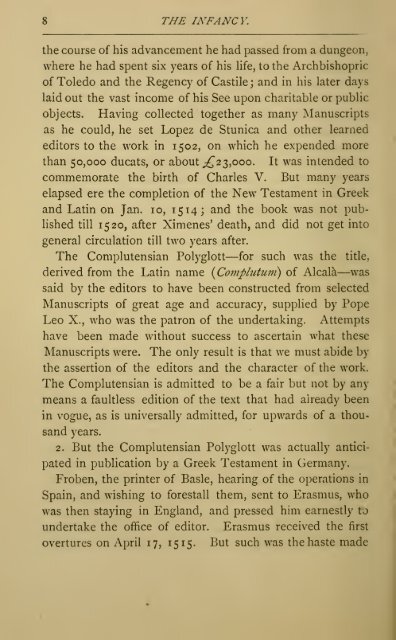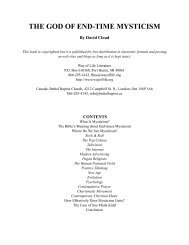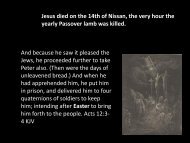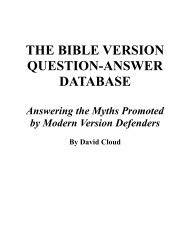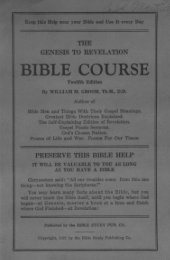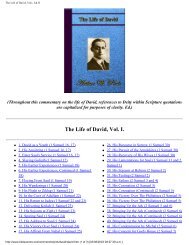A guide to the textual criticism of the New Testament - Holy Bible ...
A guide to the textual criticism of the New Testament - Holy Bible ...
A guide to the textual criticism of the New Testament - Holy Bible ...
Create successful ePaper yourself
Turn your PDF publications into a flip-book with our unique Google optimized e-Paper software.
THE INFANCY.<br />
<strong>the</strong> course <strong>of</strong> his advancement he had passed from a dungeon,<br />
where he had spent six years <strong>of</strong> his Hfe, <strong>to</strong> <strong>the</strong> Archbishopric<br />
<strong>of</strong> Toledo and <strong>the</strong> Regency <strong>of</strong> Castile; and in his later days<br />
laid out <strong>the</strong> vast income <strong>of</strong> his See upon charitable or public<br />
objects. Having collected <strong>to</strong>ge<strong>the</strong>r as many Manuscripts<br />
as he could, he set Lopez de Stunica and o<strong>the</strong>r learned<br />
edi<strong>to</strong>rs <strong>to</strong> <strong>the</strong> work in 1502, on which he expended more<br />
than 50,000 ducats, or about ;;^2 3,000. It was intended <strong>to</strong><br />
commemorate <strong>the</strong> birth <strong>of</strong> Charles V. But many years<br />
elapsed ere <strong>the</strong> completion <strong>of</strong> <strong>the</strong> <strong>New</strong> <strong>Testament</strong> in Greek<br />
and Latin on Jan. 10, 1514; and <strong>the</strong> book was not published<br />
till 1520, after Ximenes' death, and did not get in<strong>to</strong><br />
general circulation till two years after.<br />
The Complutensian Polyglott—for such was <strong>the</strong> title,<br />
derived from <strong>the</strong><br />
Latin name {Co?nplutu??i) <strong>of</strong> Alcalk—was<br />
said by <strong>the</strong> edi<strong>to</strong>rs <strong>to</strong> have been constructed from selected<br />
Manuscripts <strong>of</strong> great age and accuracy, supplied by Pope<br />
Leo X., who was <strong>the</strong> patron <strong>of</strong> <strong>the</strong> undertaking. Attempts<br />
have been made without success <strong>to</strong> ascertain what <strong>the</strong>se<br />
Manuscripts were. The only result is that we must abide by<br />
<strong>the</strong> assertion <strong>of</strong> <strong>the</strong> edi<strong>to</strong>rs and <strong>the</strong> character <strong>of</strong> <strong>the</strong> work.<br />
The Complutensian is admitted <strong>to</strong> be a fair but not by any<br />
means a faultless edition <strong>of</strong> <strong>the</strong> text that had already been<br />
in vogue, as is universally admitted, for upwards <strong>of</strong> a thousand<br />
years.<br />
2. But <strong>the</strong> Complutensian Polyglott was actually anticipated<br />
in publication by a Greek <strong>Testament</strong> in Germany.<br />
Froben, <strong>the</strong> printer <strong>of</strong> Basle, hearing <strong>of</strong> <strong>the</strong> operations in<br />
Spain, and wishing <strong>to</strong> forestall <strong>the</strong>m, sent <strong>to</strong> Erasmus, who<br />
was <strong>the</strong>n staying in England, and pressed him earnestly <strong>to</strong><br />
undertake <strong>the</strong> <strong>of</strong>fice <strong>of</strong> edi<strong>to</strong>r. Erasmus received <strong>the</strong> first<br />
overtures on April 17, 15 15. But such was <strong>the</strong> haste made


